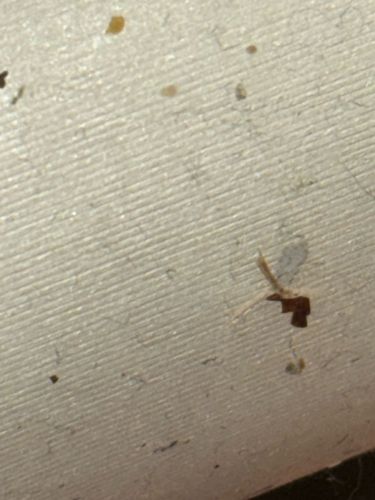Booklouse
Scientific Name: Liposcelis spp.
Order & Family: Order: Psocoptera, Family: Liposcelididae (for common indoor species like Liposcelis bostrychophila)
Size: Typically 1-2 mm in length, very small and often appear as tiny, translucent or pale tan specks.

Natural Habitat
Booklice prefer warm, humid, and undisturbed environments. Indoors, they are commonly found in old books, stored papers, pantries, wall voids, under wallpaper, in damp basements, or any area with high humidity and a presence of mold or starchy materials. Outdoors, they can be found under bark, in bird nests, or in leaf litter.
Diet & Feeding
Booklice feed on microscopic molds, fungi, starches, glues, and other organic matter. Indoors, they commonly feed on the paste in book bindings, wallpaper glue, cereals, grains, and other stored food products, especially those that have become damp or molded.
Behavior Patterns
Adult psocids are relatively inactive but can move quickly when disturbed. They may be seen wandering on surfaces indoors, especially near food sources or high humidity areas. Many species are parthenogenetic, meaning females can reproduce without males, leading to rapid population growth under favorable conditions. They often aggregate in damp, secluded places.
Risks & Benefits
Booklice are generally harmless to humans and do not bite or transmit diseases. However, they can be a nuisance pest, contaminating food products and damaging books or paper products, especially in large numbers. Their presence often indicates high humidity and/or mold growth, which can be an issue itself. They are not known to offer significant benefits to humans or the ecosystem.
Identified on: 8/29/2025